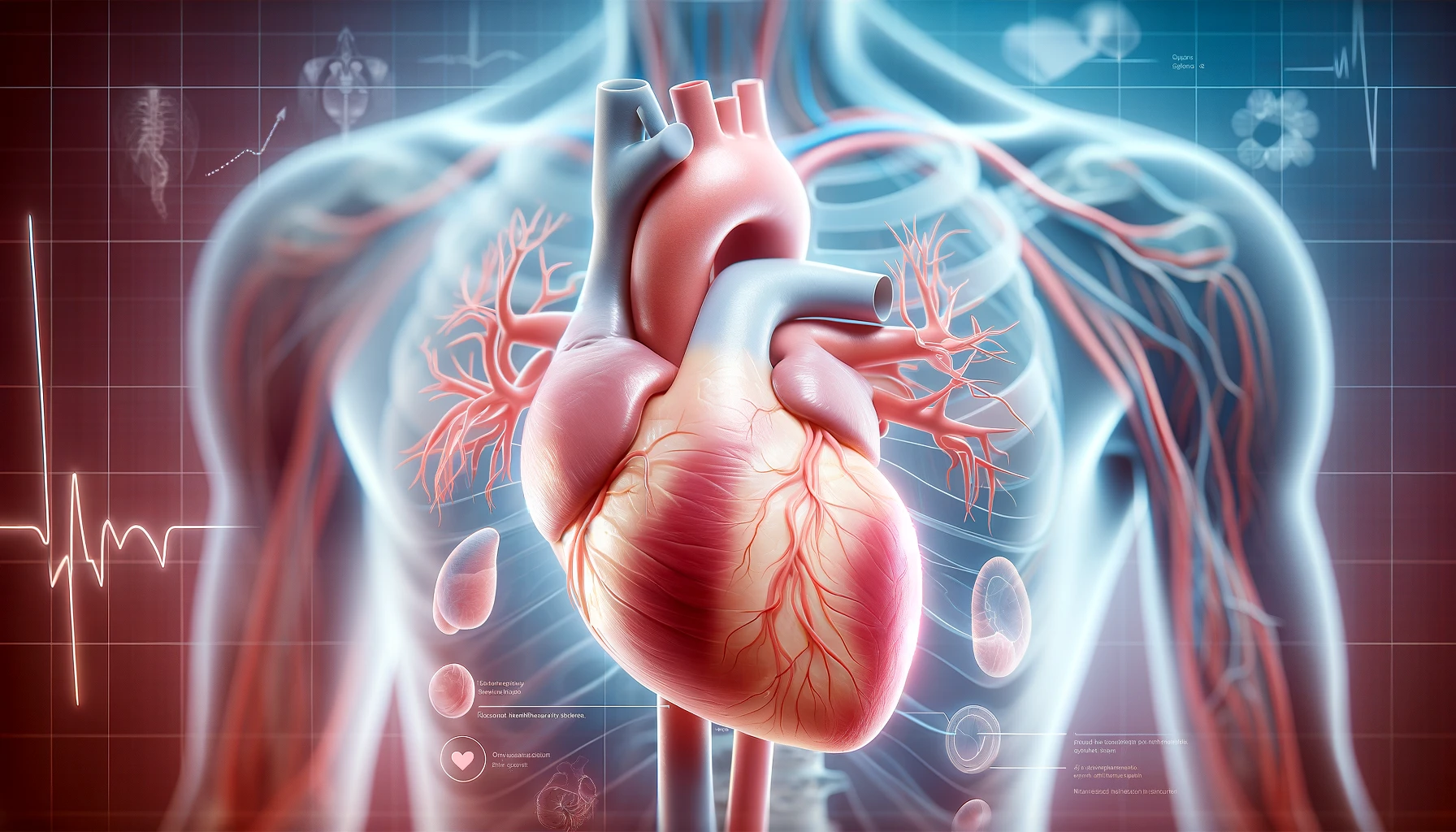Want a healthier heart after 40? Start small. Here are 8 proven lifestyle changes you can make today to reduce your risk of heart disease, improve your energy, and live better:
- Eat Heart-Smart Foods: Add fish, whole grains, berries, leafy greens, and healthy fats to your meals. Try the Mediterranean or DASH diets.
- Stay Active: Aim for 150 minutes of moderate exercise weekly. Walking, cycling, or light strength training works wonders.
- Manage Stress: Practice deep breathing, meditation, or yoga for 15–30 minutes daily to lower stress levels.
- Get Better Sleep: Sleep 7–9 hours nightly. Stick to a schedule, avoid screens before bed, and create a restful environment.
- Quit Smoking, Drink Less: Stop smoking to cut heart risks by half in just a few years. Limit alcohol to 1–2 drinks per day.
- Track Key Health Numbers: Monitor blood pressure, cholesterol, and blood sugar regularly to catch issues early.
- Maintain a Healthy Weight: Lose just 5–10% of your weight to see significant heart benefits.
- Stay Hydrated, Cut Salt: Drink 6–12 cups of water daily and limit sodium to 1,500–2,300 mg per day.
Quick Tip: Start with one change – like a 20-minute walk or adding more veggies to your plate – and build from there. Small steps lead to big results for your heart.
Eight Simple Steps for a Heart-Healthy Lifestyle
1. Choose Heart-Smart Foods
Making thoughtful food choices after 40 can help lower the risk of heart disease.
Foods That Support Heart Health
Certain nutrient-packed foods can play a big role in protecting your heart. Julia Zumpano, RD, LD, highlights this by saying:
“Eating certain foods every day can reduce your risk of developing cardiovascular disease”.
Here are some top food categories to include:
| Food Category | Examples | Benefits |
|---|---|---|
| Fish | Salmon, Mackerel, Tuna | High in omega-3 fatty acids; aim for about 8 oz per week |
| Whole Grains | Oats, Quinoa, Brown Rice | Can help lower cholesterol levels within 6 weeks |
| Berries | Blueberries, Strawberries | Packed with heart-protective phytonutrients |
| Healthy Fats | Olive Oil, Avocados | Support heart health; avocados linked to a 21% lower risk of heart attack |
| Leafy Greens | Spinach, Kale, Swiss Chard | Linked to up to a 26% reduction in cardiovascular risk |
Small changes can make a big difference. Swap butter for lighter oils like olive or canola oil. Consider soy-based proteins such as tofu or edamame instead of red meat.
Mediterranean and DASH Diets: A Guide
Incorporating these heart-healthy foods into structured eating plans can provide even more benefits. Two popular options are the Mediterranean and DASH diets.
The Mediterranean diet focuses on:
- 7-10 servings of fruits and vegetables daily
- Whole grains
- Fish twice a week
- Olive oil as the main fat source
“A Mediterranean‑style diet can help you achieve the American Heart Association’s recommendations for a healthy dietary pattern that emphasizes vegetables, fruits, whole grains, beans and legumes; includes low‑fat or fat‑free dairy products, fish, poultry, non‑tropical vegetable oils and nuts; and limits added sugars, sugary beverages, sodium, highly processed foods, refined carbohydrates, saturated fats, and fatty or processed meats”.
The DASH diet, on the other hand, includes more dairy and lean meats. Choose the one that aligns better with your daily routine and preferences.
2. Exercise for Heart Strength
Staying active is one of the best ways to keep your heart healthy after 40. Research shows that people who don’t exercise are more than twice as likely to develop heart disease.
Weekly Exercise Goals
The American Heart Association suggests combining aerobic and strength training activities for a well-rounded workout routine. Here’s a simple way to organize your week:
| Activity Type | Weekly Goal | Examples | Benefits |
|---|---|---|---|
| Moderate Aerobic | 150 minutes | Walking, swimming, cycling | Builds heart strength, boosts circulation |
| Vigorous Aerobic | 75 minutes | Running, jumping rope | Burns more calories in less time |
| Combined Approach | Mix of both | 2 days vigorous, 2 days moderate | Offers flexibility and variety |
“Exercise is like a workout for your heart and brain. Getting active, even just going outside for a walk, can help you feel better.” – American Heart Association
If you’re just starting, try three 10-minute walks each day and gradually extend them. Adding aerobic activities to your routine is a great first step, but don’t stop there – strengthening exercises are just as important for heart health.
Muscle and Flexibility Work
Strength training doesn’t just build muscles – it also supports your heart. According to a study from Iowa State University, lifting weights for less than an hour per week can lower your risk of heart attack and stroke by 40% to 70%.
Here’s how to get started:
- Strength Training: Aim for at least two sessions per week. Include exercises like:
- Squats and lunges for your legs
- Push-ups and rows for your upper body
- Core-focused movements like planks
- Flexibility Exercises: Stretching helps improve mobility and overall fitness, making it easier to stick with your routine.
3. Lower Your Stress Levels
Managing stress becomes even more important after 40. Dr. Rachel Lampert emphasizes, “Stress is sometimes underrecognized as a risk factor for heart disease”. Studies reveal that people with high stress levels are 2.5 times more likely to experience a heart attack compared to those with low stress.
Daily Stress Relief Methods
Incorporate these effective stress-relief activities into your routine to support your heart health:
| Time Investment | Stress Relief Activity | Heart Health Benefits |
|---|---|---|
| 5–10 minutes | Deep breathing exercises | Helps stabilize blood pressure and ease anxiety |
| 15–30 minutes | Meditation or yoga | Reduces cortisol levels and improves blood circulation |
| 30+ minutes | Physical activity | Lowers stress hormones and strengthens the heart |
| Throughout day | Connecting with loved ones | Boosts emotional well-being and alleviates stress |
Try the 4-7-8 breathing technique: inhale for 4 counts, hold for 7 counts, and exhale for 8 counts. This simple exercise helps calm your nervous system and manage blood pressure.
“When you learn how to manage your stress in a calm, healthy way, your blood pressure drops over time.”
– Dr. Rishin Shah, MD, Prime Heart and Vascular
How Stress Hurts Your Heart
Chronic stress takes a toll on your heart in several ways:
- Physical Effects: Stress hormones like cortisol and adrenaline raise your heart rate and blood pressure.
- Inflammation: Dr. Rachel Lampert explains, “Long-term – or chronic – stress can cause higher levels of inflammation in the body that contribute to increases in plaque buildup in the arteries – and that can lead to such problems as coronary artery disease”.
- Lifestyle Changes: Stress often leads to unhealthy habits, such as poor eating, smoking, or excessive drinking.
Taking small steps to manage stress daily can make a big difference. For example, pause to take a few deep breaths before reacting to a stressful situation. Research also shows that stress management programs can improve longevity for women with heart disease.
4. Get Better Sleep
Getting enough quality sleep is crucial for maintaining a healthy heart after 40. Studies reveal that about 1 in 3 adults don’t get enough rest regularly, and poor sleep habits can take a toll on heart health.
Steps to Sleep Well
To improve your sleep, create an environment and routine that encourages rest. Here are some practical, research-backed strategies:
| Time of Day | Sleep-Boosting Action | Impact on Heart Health |
|---|---|---|
| Morning | Get moving with some physical activity | Helps regulate your sleep-wake cycle |
| Afternoon | Cut back on caffeine later in the day | Reduces sleep disturbances |
| Evening | Dim the lights as bedtime approaches | Encourages natural melatonin production |
| Night | Keep your bedroom cool, dark, and quiet | Improves overall sleep quality |
“It’s absolutely a vicious cycle. Not sleeping well may lead to making poorer choices in all facets of life”, – Marie-Pierre St-Onge, associate professor of nutritional medicine at Columbia University in New York.
Aim for 7–9 hours of sleep each night to support heart health. Here are some tips to build a consistent bedtime routine:
- Stick to a schedule: Go to bed and wake up at the same time every day.
- Create a wind-down ritual: Spend 20–30 minutes unwinding with activities like reading or meditating.
- Ditch the screens: Avoid electronic devices for at least an hour before bedtime.
Watch for Sleep Problems
Even with a good routine, sleep disorders can still affect your rest and, by extension, your heart health. Be aware of these common issues:
- Sleep Apnea
This condition affects 10–25% of adults. Symptoms include:- Loud snoring
- Gasping or choking during sleep
- Morning headaches
- Daytime fatigue
- Insomnia
Up to 25% of adults experience chronic insomnia. Signs include:- Trouble falling asleep
- Waking up multiple times during the night
- Waking up too early
- Feeling unrested after sleep
“Getting the right amount of sleep is an essential component of good heart and brain health.” – American Heart Association
If you’re struggling with sleep issues, consult a doctor about a sleep study. Poor sleep can lead to serious heart risks, including obesity, high blood pressure, and diabetes.
sbb-itb-4bfbcfd
5. Stop Smoking and Drink Less
Cutting back on smoking and alcohol can greatly improve heart health after 40.
Health Benefits of Quitting Smoking
When you quit smoking, your heart starts recovering almost immediately:
| Time After Quitting | Health Improvements |
|---|---|
| 20 minutes | Blood pressure and heart rate return to healthier levels |
| 2–14 days | Carbon monoxide levels normalize, and circulation gets better |
| 1–12 months | Breathing improves, and coughing decreases |
| 3–6 years | Risk of coronary heart disease is cut in half |
| 15 years | Heart disease risk matches that of a non-smoker |
Here’s how to quit successfully:
- Call 1-800-QuitNow (784-8669) for support
- Set a quit date within the next week
- Use nicotine replacement therapies if needed
- When cravings hit, wait 10–15 minutes before acting on them
“When you feel the urge to smoke, vape or use nicotine, tell yourself to wait for 10-15 minutes. Often, cravings pass in a short amount of time, and you’ll feel better once the urge is gone.” – American Heart Association
Quitting smoking is a big step, but drinking less is just as crucial for protecting your heart.
Drinking in Moderation
To keep your heart healthy, stick to these limits:
- Men: No more than 1–2 drinks per day
- Women: No more than 1 drink per day
Binge drinking – defined as 5 or more drinks for men or 4 or more drinks for women in about two hours – can increase the risk of atrial fibrillation, which may lead to blood clots and strokes.
“Drink alcoholic beverages only in moderation, if at all. Understand the potential effects on your health if you do indulge. And don’t start drinking for unproven health benefits.” – American Heart Association
If you want to drink less, try these tips:
- Explore meditation, yoga, or other relaxation methods
- Dedicate 15 minutes daily to a fun, alcohol-free activity
Some people should avoid alcohol entirely, including those who are pregnant, under 21, or have specific health conditions. If you don’t drink now, there’s no reason to start for heart health.
6. Track Your Health Numbers
Keeping an eye on key health metrics after turning 40 can help catch potential issues early.
Key Tests After 40
Here are some important metrics to monitor:
| Health Metric | Healthy Range |
|---|---|
| Blood Pressure | Below 120/80 mmHg |
| Total Cholesterol | ≤ 180 mg/dL |
| LDL (“Bad”) Cholesterol | < 70 mg/dL |
| HDL (“Good”) Cholesterol | > 60 mg/dL |
| Triglycerides | < 150 mg/dL |
| A1C (Blood Sugar) | 4.5% – 5.7% |
High blood pressure often has no obvious symptoms, so it’s important to check it regularly. You can use a home monitor, a machine at your pharmacy, or even a kiosk at your local grocery store.
If heart disease runs in your family, you might want to talk to your doctor about a cardiac calcium score test. This scan measures plaque buildup in your arteries:
- Score below 100: Low risk
- Score 100–300: Moderate risk
- Score above 300: High risk
Regular monitoring is just the start – your doctor can help interpret these results and guide next steps.
Partner With Your Doctor
Work with your doctor to determine how often you should be tested.
“Anything you can do at any age is going to make your future healthier and happier.”
– Norrina Allen, associate professor of preventive medicine at Northwestern University Feinberg School of Medicine in Chicago
If your numbers aren’t within the recommended ranges, your doctor might suggest:
- Adjusting your diet or activity levels
- Prescribing medication if needed
- Increasing how often you monitor certain metrics
- Ordering additional tests
For blood sugar, follow the screening intervals that match your risk factors.
When reviewing your results, consider asking questions like:
- How do my current numbers compare to past results?
- What changes can I make to improve these metrics?
- Should I monitor anything at home?
- When should I schedule my next test?
Tracking your health metrics regularly helps you make informed decisions and take steps to protect your heart.
7. Keep a Healthy Weight
Keeping your weight in check is key to supporting your heart’s health, especially after 40. Maintaining a steady and healthy weight helps ease the burden on your heart and lowers risks tied to cardiovascular issues.
Tips for Managing Your Weight
Making small, lasting changes in your daily habits can help you manage your weight effectively. Here are some practical steps:
- Fill half your plate with vegetables to boost nutrition and control calories.
- Use smaller plates to avoid oversized portions.
- Start your day with a protein-packed breakfast to stay full longer.
- Check food labels to make informed choices.
- Cook meals at home to better control ingredients and portion sizes.
For everyday success, try these strategies:
- Track your calorie intake to stay on target.
- Plan your meals ahead of time to avoid last-minute unhealthy choices.
- Keep healthy snacks nearby for when hunger strikes.
- Swap sugary drinks for water to cut empty calories.
- Measure portions until you can confidently estimate serving sizes.
“Being overweight is hard on your heart. It increases your risk of having heart disease, a stroke, high cholesterol, high blood pressure, and diabetes.” – NHLBI, NIH
Benefits of Losing Even a Little Weight
Even small amounts of weight loss can lead to noticeable heart health improvements. Here’s what you can expect:
| Weight Loss | Health Benefits |
|---|---|
| 3-5% | • Lower triglycerides • Better blood sugar control • Reduced diabetes risk |
| 5-10% | • Improved blood pressure • Lower LDL (bad) cholesterol • Higher HDL (good) cholesterol |
| 10+ lbs | • Reduced risk of heart disease |
For sustainable progress, aim to lose 5-10% of your starting weight over six months. For instance, if you weigh 200 pounds, a goal of losing 10-20 pounds is both achievable and impactful.
Consider teaming up with a friend for motivation, consulting a dietitian for expert advice, or joining a structured weight loss program for guidance.
“People who adhere to a healthy diet and exercise regularly are more likely to achieve successful long-term weight loss as they are more in control of their behavior.”
8. Drink Water, Cut Salt
Staying hydrated and managing sodium intake are key steps for maintaining heart health after 40.
Why Water Matters for Your Heart
Your heart is about 73% water and pumps nearly 2,000 gallons of blood every day. To support this incredible workload, men should aim for 8–12 cups of fluids daily, while women need 6–8 cups.
Here’s how hydration helps your heart:
| Benefit of Hydration | How It Helps Your Heart |
|---|---|
| Maintains Blood Volume | Keeps circulation and blood pressure steady |
| Boosts Heart Efficiency | Helps the heart pump blood more effectively |
“Water is critical for heart health because the more hydrated your heart is, the better it functions. That means pumping blood.” – Andrew Sabatini
To stay hydrated:
- Carry a reusable water bottle wherever you go.
- Add slices of fresh fruit to your water for a natural flavor boost.
- Check your urine color – it should be a light yellow.
- Drink more fluids during exercise or hot weather.
While drinking enough water supports blood flow, cutting back on salt is another way to protect your heart by keeping blood pressure in check.
How to Cut Back on Salt
The average American eats almost seven times the sodium needed for survival – 500 mg daily is enough to keep you going. The American Heart Association suggests limiting sodium to 2,300 mg per day, with an ideal goal of 1,500 mg for most adults.
Here are some easy ways to cut down on salt:
| Replace Salt With | Examples |
|---|---|
| Fresh Herbs | Basil, oregano, dill |
| Citrus | Lemon, lime, orange zest |
| Vinegars | Balsamic, apple cider |
| Spices | Cumin, paprika, black pepper |
When shopping or cooking:
- Check nutrition labels for sodium content.
- Rinse canned vegetables to reduce sodium by as much as 40%.
- Opt for “low-sodium” or “no salt added” products.
- Prepare meals at home to control how much salt goes into your food.
“Over time, your taste buds can adjust to less salt. Studies show that when people follow a lower-sodium diet, they start to prefer it, and that the foods they once enjoyed taste too salty.” – American Heart Association
Since over 70% of dietary sodium comes from processed and restaurant foods, focus on fresh, whole ingredients. When eating out, ask for sauces on the side or request no added salt in your meal.
For flavor without the extra salt:
- Roast or grill vegetables to bring out their natural sweetness.
- Use fresh garlic and onions as a base for your dishes.
- Experiment with different vinegars in marinades.
- Add potassium-rich foods like bananas and sweet potatoes to help balance sodium’s effects.
Conclusion: Start Small Changes Now
Even small changes can make a big difference in your heart health after 40. The key is to start now – each small step adds up to long-term benefits for your cardiovascular health.
Here’s a simple guide to get started:
| Priority Level | Change | First Step |
|---|---|---|
| Immediate | Diet | Add one extra serving of vegetables to your meals each day |
| High Impact | Exercise | Begin with a 20-minute walk daily |
| Critical | Smoking | Set a quit date and create a plan to stop |
| Daily Habit | Hydration | Use a marked water bottle to track your intake |
“Anything you can do at any age is going to make your future healthier and happier.” – Norrina Allen, associate professor of preventive medicine at Northwestern University Feinberg School of Medicine
Consistency is key. For example, using herbs instead of salt can help you adjust to lower-sodium meals without sacrificing flavor. Swapping sugary drinks for water not only cuts calories but also supports heart health.
Focus on building one habit at a time. Let each change become part of your routine before introducing another. Whether it’s taking a short walk, adding vegetables to your dinner, or sticking to a regular bedtime, every positive choice strengthens your heart.
“Making time for yourself is an age-old adage, but there are long-term benefits with being healthy – and even short-term benefits.” – Norrina Allen, associate professor of preventive medicine at Northwestern University Feinberg School of Medicine
Start today. Lifestyle medicine highlights these small but impactful steps as effective ways to prevent and manage heart disease. Each action, no matter how small, moves you closer to better heart health.
FAQs
What are some easy ways to add heart-healthy foods to my diet without making major changes?
Incorporating heart-healthy foods into your diet can be simple and enjoyable with a few small adjustments. Start by adding nutrient-rich options like fruits, vegetables, whole grains, lean proteins, and healthy fats to your meals. For example, toss spinach or kale into your morning smoothie, or swap white bread for whole-grain varieties.
Make smart substitutions to improve your meals without overhauling them. Use olive oil instead of butter when cooking, snack on nuts or berries instead of chips, and choose low-sodium options when shopping. Planning your meals ahead of time can also help you stay on track and make healthier choices effortlessly. These small steps can lead to big benefits for your heart health over time.
What are some easy ways to stick to an exercise routine for better heart health after 40?
Staying consistent with exercise after 40 is key to improving heart health. Aim for 150 minutes of moderate-intensity aerobic exercise (like brisk walking or cycling) or 75 minutes of vigorous activity (like running or swimming) each week. You can break this into smaller sessions, such as 30 minutes a day, five times a week.
To make it easier to stick with, choose activities you enjoy and schedule them into your daily routine. Consider walking with a friend, joining a fitness class, or setting reminders to stay active. Starting small and gradually increasing your intensity can also help you build a sustainable habit.
What are some practical ways to reduce stress and protect my heart health, especially if I have a busy lifestyle?
Managing stress is crucial for heart health, even with a packed schedule. Here are some effective strategies:
- Stay Active: Regular exercise, like brisk walking or cycling, helps lower stress hormones and improves heart health. Aim for at least 150 minutes of moderate activity per week.
- Practice Relaxation: Techniques such as deep breathing, meditation, or yoga can calm your mind, reduce blood pressure, and ease tension.
- Get Enough Sleep: Prioritize 7–9 hours of quality sleep each night to help your body recover and regulate stress effectively.
Even small changes can make a big difference, so start with what feels manageable and build from there!





